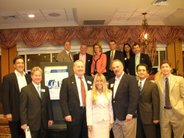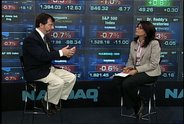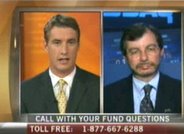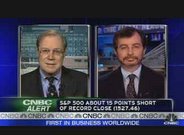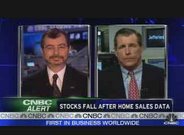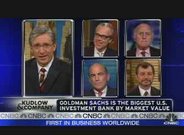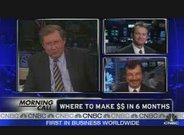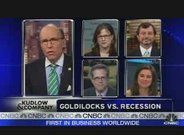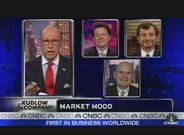Yesterday marked the one-year anniversary of the bear market low in stocks and the subsequent bull rally. Therefore, a review of where we were, where we are now, and, importantly, where we are likely to be headed, seems to be in order.
To refresh your memory, let’s go back to March of last year and note the following excerpts from commentaries made by yours truly regarding the end of the world as we knew it:
March 5 – “Bears Out of Momentum”
“…are we headed non stop to 600? Before I get to why the 600 call is unlikely right now, let me address 2 factors - one fundamental, the other, a market dynamic.”
To read the complete commentary, click here
March 12: “Why Divergences Work”
“Tuesday’s big up-market demonstrated a tried-and-true investment axiom: When market conditions are ready, a catalyst is all that's needed to get the show on the road. The show, in this case, is a cyclical bull rally. And the catalyst was the Citigroup's earnings statement. Here are some of the particulars….”
To read the complete commentary, click here
March 26: The Cyclical Bull Within the Secular Bear
“In stocks, we seem to have a cyclical bull within the secular bear. Investors (and the world economy) have been given a reprieve - that is, until next year, when all the money and all the regulatory changes thrown at the economy and the financial system must evolve into greater private market participation.
In the case of the US economy, capex must take the economic handoff from government and become the principal driver of economic growth, as US consumer spending continues at a more muted pace. For the consumer, balance-sheet repair will almost certainly continue as its largest component -- the aging baby boomers -- set aside real savings out of income to provide for themselves in the rapidly approaching retirement years.
Therefore, as the US economy goes through its transition from its overly leveraged consumer bias to a greater level of corporate activity -- driven largely by exports to the real growth engine of the next decade and longer, emerging economies -- investors should consider repositioning their portfolios to include more emerging-markets investments.”
To read the complete commentary, click here
The rest is history. Stocks rallied, emerging markets did best, and investors were rewarded for their courage and wisdom in relying on time tested market tools, such as the valuation parameters and the divergences principle described above.
Okay, now what?
Investing is a game of “What have you done for me lately?”. In accordance with that game, investors cannot sit on their laurels and revel in the joy of their courage and wisdom. When it comes to investing, the past is always prologue. And it functions as a guide to what is likely to be.
In attempting to predict where markets are headed, it is just not enough to use the past as a valuable guide to what will be. It is also necessary to remember that markets are driven by investors, and investors are people whose tendencies have a certain predictive dynamic due to the simple fact that they are human. This is just another way of saying that human nature doesn’t change; we, as investors, just emphasize different things at different times. Moreover, the principles of asset values are also a reliably consistent tool, one that enables an investor to estimate what the fair value for any given asset might be.
Taken together, the three principles to follow – history as a guide, the constancy of human nature, and estimates of fair value – enable an investor to apply the same tools and principles that got the above noted rally forecast correctly and apply them to today’s market environment. With that said, let’s first briefly consider where we came from and what it means for the equities markets going forward.*
Back From the Brink
The massive capital infusion governments around the world threw at the financial then economic crisis enabled the world economy and markets to step back from the abyss of global collapse and regain some sense of stability. However, government stimuli are good for only so long. Eventually, end user demand must take over and drive the world economy, which will drive the world’s equity markets higher. In this regard, the jury is still out as to whether such an economic handoff will actually occur.
The US consumer, engine of end user demand for most of the past several decades, remains in the throes of balance sheet repair. Paying down debt and building sufficient cash reserves for that rainy day is still priority number 1. Occasional episodes of spending beyond their means will occur from time to time (as it may have last month based on the surprising increase in consumer borrowing). But with the bulk of baby boomers bordering on retirement, balance sheet repair will remain the secular trend for the foreseeable future.
Therefore, the hope that an emerging middle class in developing economies can pick up much of the global growth slack left by the reduction in US consumer demand. This, along with a sustained level of infrastructure and corporate capital spending (capex) rebuilding vital to both developing and developed economies, are central to a sustainable growth phase for the world economy. However, a hope is not a certainty, and whether the handoff will occur and just how robust will it be is one of the key areas to focus on going forward.
At present, the odds do favor such an occurrence, but many obstacles remain in place not the least of which is confidence. For example, in order for infrastructure and corporate capex spending to occur in earnest, policy makers must muster the political will and organize their priorities and corporate senior management must believe that current long range spending plans will result in future growth rates and profitability in excess of their cost of capital. This is one of the key areas where the analytical focus must be centered.
*In my next commentary, I will address the second and third areas – fundamental valuation models and market intelligence readings. Until then, enjoy the ride.















